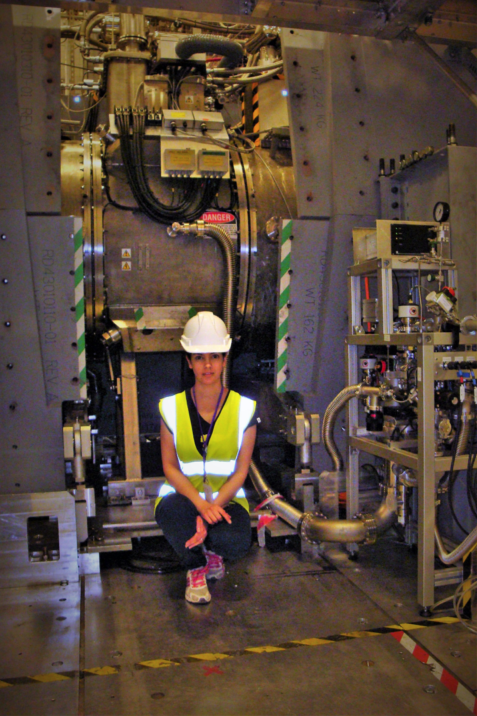The international Muon Ionization Cooling Experiment (MICE) has completed its data run and is in the final stages of data analysis and pu

blication. Illinois Tech physicists have been among the leaders of the experiment, conducted at Rutherford Appleton Laboratory in the UK, since it was conceived 20 years ago.
MICE has been an ambitious effort to demonstrate the feasibility of a new particle-accelerator idea – high-energy storage rings for intense beams of the electron’s “fat” cousin, the muon. To demonstrate that the volume occupied by a muon beam can be reduced (“cooled”) would be to establish the feasibility of muon accelerators for particle physics. Muon accelerators have the potential to unlock the secrets nature has hidden in the properties of the neutrino. MICE aimed to deliver the necessary, seminal demonstration of cooling. The preliminary result of the experiment is that ionization cooling works as expected. As physicists worldwide are discussing what the next big step in accelerators should be after the Large Hadron Collider at CERN, some feel that a muon collider should be considered.
Daniel Kaplan, professor of physics and director of the Illinois Tech Center for Accelerator and Particle Physics, was instrumental in the original conception of MICE and in the successful proposal of NSF support for the U.S. MICE collaborators. He also led the Illinois Tech MICE group, and served on the MICE executive board for the duration of the experiment. Yagmur Torun, associate professor of physics, led the initial development of the MICE software and served as chair of the MICE collaboration board.
Kaplan noted the experiment as an important step in the careers of many young physicists. It is the thesis experiment for Tanaz Mohayai, current graduate student of Pavel Snopok, associate professor of physics, and for several other graduate students from around the world. Ben Freemire (Ph.D. PHYS ‘13), Gene Kafka (Ph.D. PHYS ‘15), and Peter Lane (Ph.D. PHYS ‘16) also participated, as did physics undergraduates Michael Drews, Varrick Suezaki, Miles Winter, and Michael Wojcik.
To learn more about MICE, visit the website.
Illinois Tech graduate student Tanaz Mohayai photographed at the MICE experiment.
